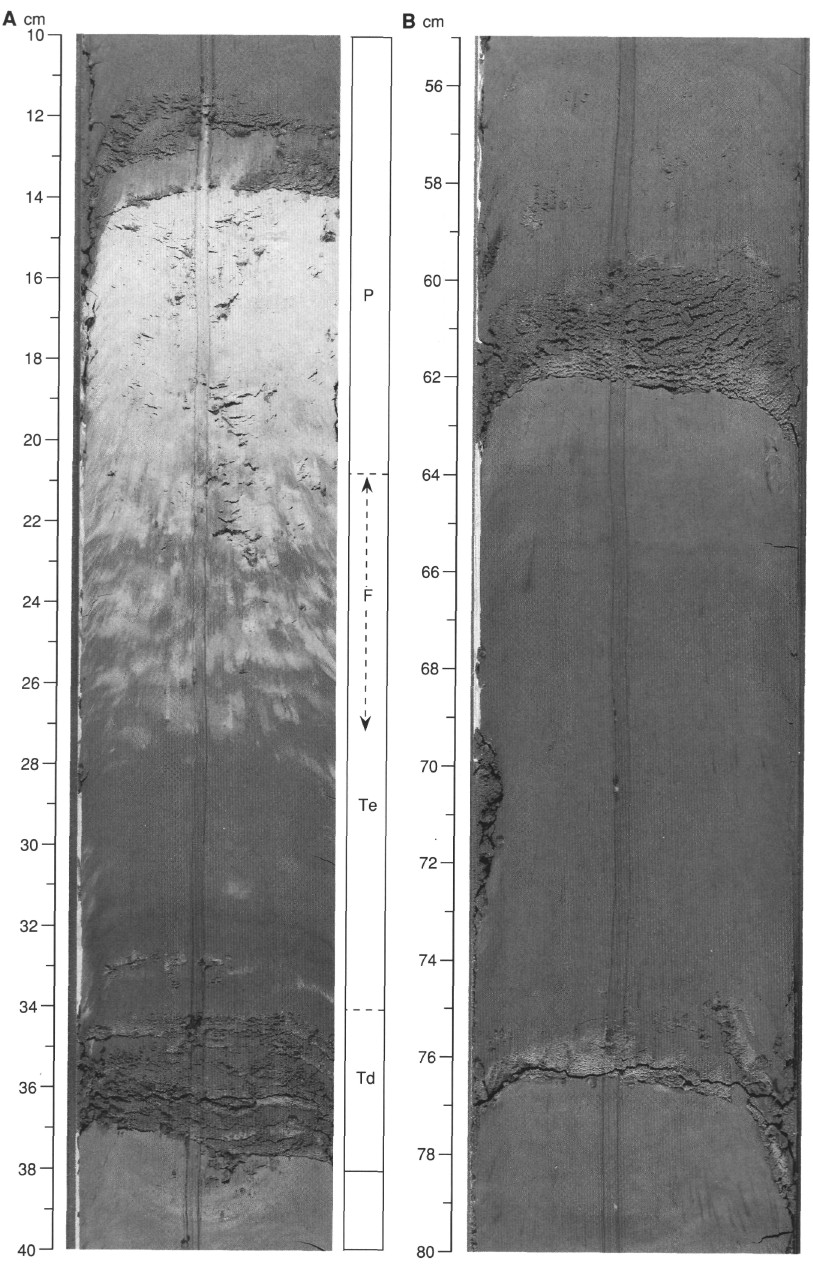
Figure 11. Turbidite sequences in Unit I. A. Complete turbidite sequence with a basal layer (34-38 cm) of fine sand (Td) grading upward into silty clay (Te), capped by intensively bioturbated light-colored pelagic nannofossil ooze (P) that is mixed with the underlying turbiditic clay by burrow mottling (F) (Interval 149-897C-14R-3, 10-40 cm). B. Two turbidite sequences (at 60-62 cm and 75-76 cm) that lack the upper hemipelagic interval (i.e., showing "top cut-out") as a result of erosion by later turbidity current(s) and/or nondeposition (Interval 149-897C-14R-3, 55-80 cm).



![]()